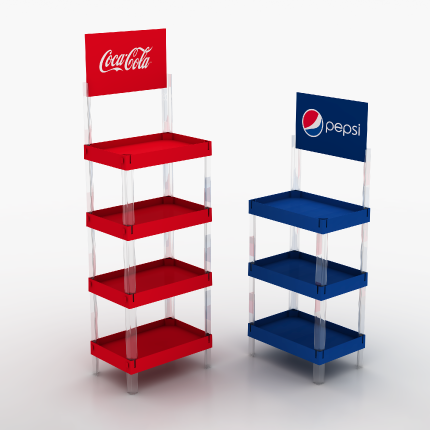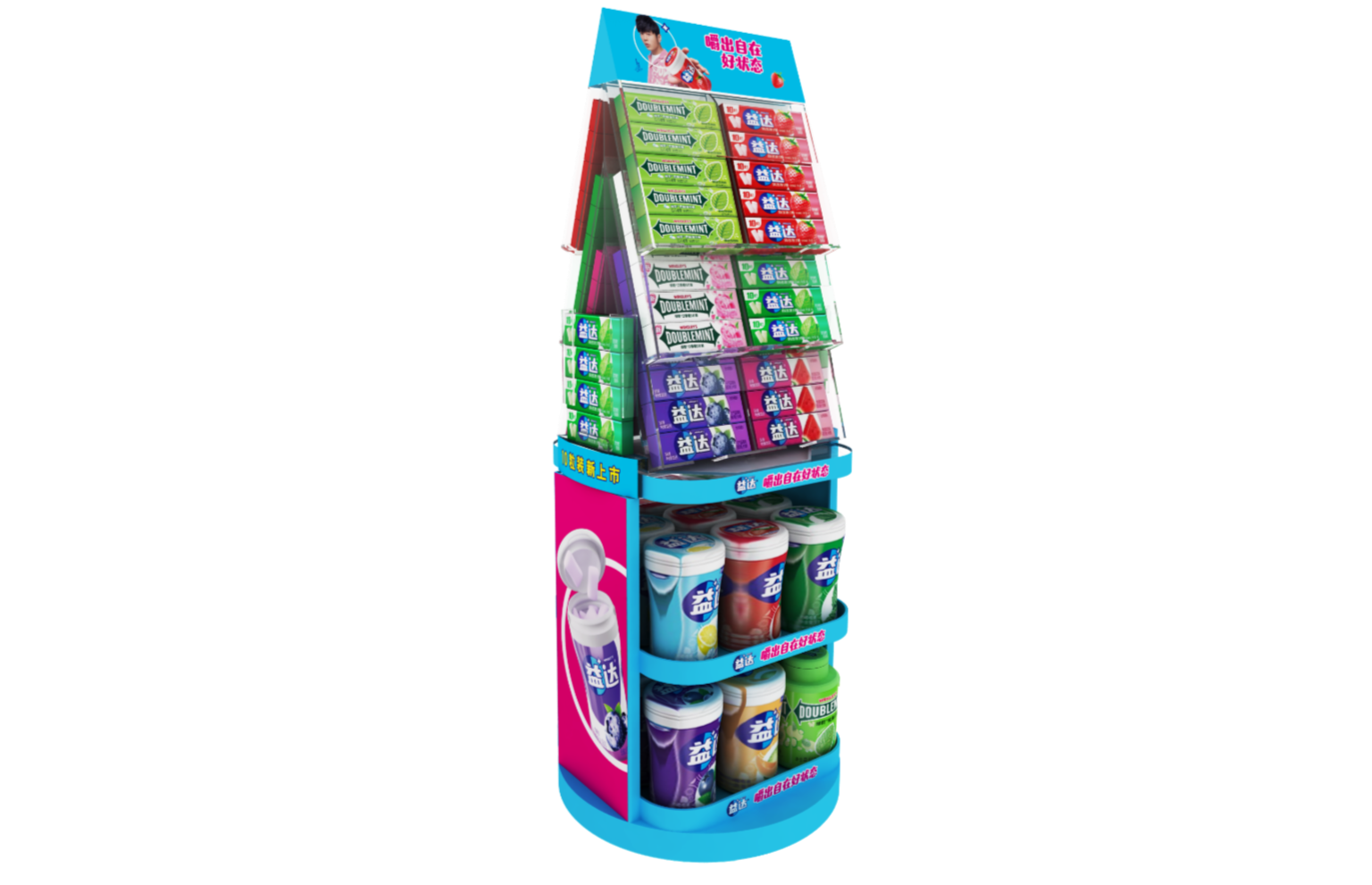Maximizing Visual Impact Through Strategic Display Stand Positioning
The success of a retail space heavily depends on how effectively merchandise is presented to customers. Retail store display stands serve as silent salespeople, showcasing products at their best while encouraging customer interaction and ultimately driving sales. Understanding the optimal height for these displays is crucial for creating an inviting shopping environment that converts browsers into buyers.
The strategic placement and height of display stands can make the difference between products that fly off the shelves and those that remain untouched. By mastering the principles of display height optimization, retailers can create more engaging shopping experiences while maximizing their valuable floor space.
Understanding the Science Behind Display Heights
The Power Zone Principle
In retail merchandising, the power zone refers to the area between a customer's shoulder and knee level - typically ranging from 4 to 5.5 feet from the floor. This zone represents the sweet spot where products receive the most attention and interaction. When positioning retail store display stands, this prime real estate should be reserved for high-margin items or new products that require maximum visibility.
Research has shown that products placed within this zone can experience up to 35% higher sales compared to items displayed outside this optimal viewing area. This psychological principle stems from human ergonomics - customers naturally focus on items that require minimal physical effort to view and reach.
Customer Comfort and Accessibility
The average adult's comfortable reaching height spans from approximately 24 inches to 60 inches from the floor. When setting up retail store display stands, this range should be considered to ensure products remain easily accessible to most customers. Displays that require stretching, bending, or straining can create negative shopping experiences and potentially deter purchases.
For products targeting specific demographics, these measurements may need adjustment. Children's products, for instance, should be positioned lower, while premium items might be placed slightly higher to create a sense of prestige while still remaining within reach.

Essential Height Guidelines for Different Display Types
Counter and Tabletop Displays
Counter displays typically work best at heights between 36 to 42 inches, allowing for comfortable product examination while maintaining visual appeal. This height range is particularly effective for retail store display stands featuring jewelry, cosmetics, or small electronics where customers need to interact closely with the products.
When using tiered displays on countertops, ensure the highest tier doesn't exceed 54 inches from the floor. This maintains visibility across the store while preventing the display from becoming a visual barrier between staff and customers.
Floor-Standing Display Units
Floor-standing retail store display stands should follow a graduated height system, with the tallest point typically not exceeding 72 inches. The most important products should be positioned between 48-60 inches from the floor, where they naturally fall into the customer's line of sight. Lower shelves can house larger items or additional stock, while top shelves work well for lighter, visually appealing products that don't require frequent handling.
When dealing with heavier items, keep display heights lower to ensure customer safety and easy product access. A maximum height of 54 inches is recommended for displays containing items weighing more than 5 pounds.
Optimizing Display Heights for Store Layout
Store Size Considerations
The ceiling height and overall store dimensions play crucial roles in determining appropriate display heights. Smaller retail spaces require more strategic planning with retail store display stands to maintain an open, uncluttered appearance. In these environments, keeping display heights below 66 inches helps prevent the space from feeling cramped while ensuring good visibility throughout the store.
Larger retail environments can accommodate taller displays, potentially up to 84 inches, particularly along walls or in designated high-fixture areas. However, maintaining clear sightlines across the store should remain a priority to help customers navigate the space effectively.
Traffic Flow Management
Display height variations can help create natural traffic patterns throughout the store. Using a mix of retail store display stands at different heights helps break up the visual monotony while guiding customers through the space. Gradually increasing display heights from the entrance toward the back of the store can create a sense of depth and encourage exploration.
Consider using lower displays (around 48 inches) in high-traffic areas and aisles to maintain visibility and prevent congestion. Higher displays can be positioned along walls or in corners where they won't impede customer movement or block important signage.
Specialized Height Recommendations
Luxury Product Displays
For premium or luxury items, retail store display stands should be positioned to enhance the perceived value of the products. A slightly elevated height, around 42-48 inches, places items at eye level while creating a sophisticated presentation. This height range allows customers to examine products without bending down, reinforcing the premium shopping experience.
Incorporating varying heights within the same display can create visual interest and hierarchy, with signature pieces positioned at optimal viewing heights between 50-60 inches.
Interactive Display Zones
Displays designed for product testing or demonstration should prioritize customer comfort and engagement. For these retail store display stands, a height of 36-40 inches provides an ideal surface for customer interaction while accommodating both standing and seated positions.
When incorporating digital elements or touchscreens, maintain screen centers at approximately 57-65 inches from the floor, allowing comfortable viewing for most adults while ensuring accessibility compliance.
Frequently Asked Questions
What is the ideal height range for most retail display stands?
The ideal height range for retail store display stands typically falls between 48-60 inches from the floor, corresponding to the average adult's eye level and comfortable reaching zone. However, this can vary based on your target demographic and product type.
How can I determine the best display height for my specific products?
Consider factors such as product size, weight, target customer demographics, and interaction requirements. Test different heights with sample customer groups and analyze traffic patterns and sales data to optimize placement.
Should display heights be consistent throughout the store?
While maintaining some consistency is important for visual harmony, varying display heights can create interest and improve navigation. Use a planned mixture of heights that follows customer shopping patterns while ensuring key products remain in the power zone.
How do I adjust display heights for different customer demographics?
For stores catering to specific demographics, adjust standard heights accordingly. Children's products should be displayed lower (24-48 inches), while stores targeting taller demographics might raise displays slightly. Always ensure the most important products remain within comfortable reach of your primary customer base.

